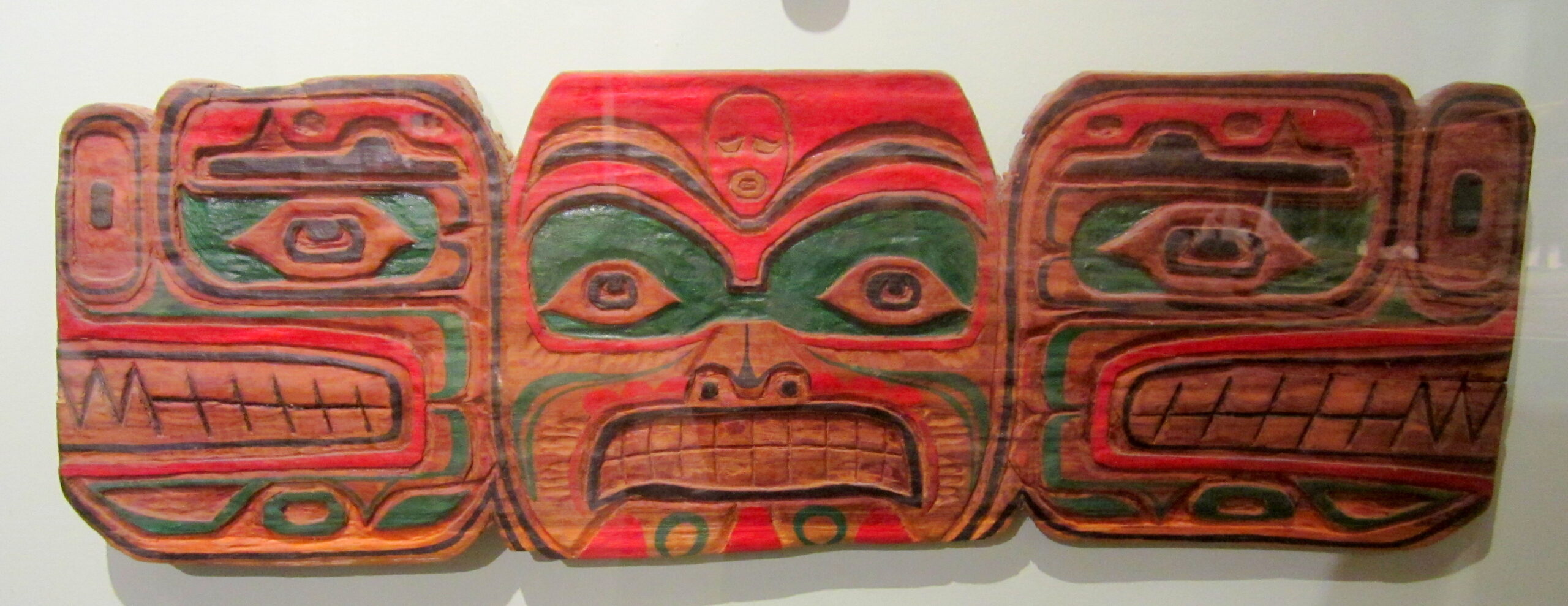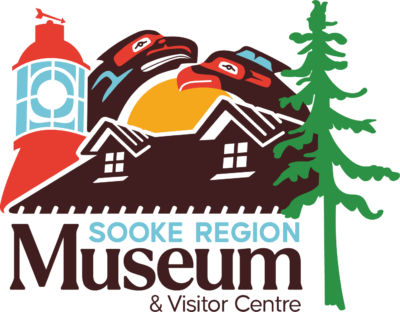
The Sooke Region Museum has a small collection of First Nations carvings that show the talent and traditions of the T’Sou-ke, Pacheedaht and neighbouring bands. Approximately half of our carvings are on display in our exhibits.
One of the first things a visitor will see upon entry to the museum and Visitor Centre is our totem pole carved and painted by Simon Charlie (2013.009.001). The top of the totem is a thunderbird with its wings spread out and the bottom half is Tsonoqua, the wild woman of the woods. These depictions are reflective of the Northern Vancouver Island Kwakiutl (or Kwagiulth) First Nations traditions. Simon carved this totem out of western red cedar in the 1950s.
This totem was donated to the museum by the Nickerson family. It was once situated at their resort on Salt Spring Island, but when the Nickersons moved to Gordon’s Beach, the totem moved there too. Unfortunately, the totem sat outside and eventually become bleached by the sun and damaged by salt and water; this type of weathering is typical of outdoor totems.
The totem was restored by T’Sou-ke band member and canoe carver Johnathon Ryce. An article in the Sooke News Mirror on July 5, 2006 states, “…Ryce has been slowly and respectfully following the traces of old paint. The new paint is bringing the totem back to its former strength, a tribute to the original carver and First Nations Culture.” At that time, Ryce stated this was not a ceremonial pole. The museum also has over a dozen mini totems that are typically one foot high; these are not currently on display.
On display in our chief exhibit is a carving by late Chief Charlie Jones, or Queesto, of the Pacheedaht band (1977.008.003). This carving depicts the mythological lightning serpent, a common symbol amongst Coast Salish First Nations that illustrates imagery of a snake and a wolf. The carving has three distinct faces that are painted with red, green and black colours; it is approximately 28” long and 9.5” high.
The lightning serpent has the head of a wolf. Wolves are renowned because of their hunting prowess and strong family units. The snake symbol has several different meanings including fertility and bringer of storms (eg. lightning). Queesto’s family had a tradition of hanging this carving as a way to greet visitors into their home. This carving is thought to be an authentic design from the Jones family. Queesto was hereditary chief of the Pacheedaht band from 1921 to 1990.
Also on display, in our basketry exhibit, are two masks carved in the mid-1970s by Queesto. Both masks have been stained dark and have wide eyes and open smiles showing teeth (1977.008.001-002). The faces are human-like rather than the characteristic mythological imagery seen in First Nations carvings. It is clear the masks were carved from sections of a log, but the wood type is unknown. Queesto signed the back of these masks; one is dated, in Port Renfrew, May 1976. Queesto was 99 years old when he carved these masks (he was 114 when he passed).

